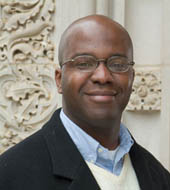小结
Definition
History and exam
Key diagnostic factors
- presence of risk factors
- anticipatory anxiety and worry
- tachycardia
- hyperventilation
- sweating
- flushing
- muscle tension
Other diagnostic factors
- post-event processing
- attentional biases
- social skills deficits
- crying, tantrums, or 'freezing'
- selective mutism
Risk factors
- psychiatric comorbidity (e.g., anxiety, mood, and substance-use disorders)
- genetic
- temperamental factors
- parenting style
- psychological disorder
- life stressors
- environmental factors
Diagnostic investigations
1st investigations to order
- clinical diagnosis
Investigations to consider
- blood glucose
- serum thyroid-stimulating hormone
- toxicology screen (urine and blood)
Treatment algorithm
adults: no comorbidity
adults: comorbidities
children and adolescents
Contributors
Authors
Craig N. Sawchuk, PhD

Professor
Department of Psychiatry and Psychology
Mayo Clinic
Rochester
MN
Disclosures
CNS declares that he has no competing interests.
Jason P. Veitengruber, MD

Associate Professor
Department of Psychiatry and Behavioral Sciences
University of Washington School of Medicine
Seattle
WA
Disclosures
JPV is an author of a reference cited in this topic.
Bunmi O. Olatunji, PhD

Professor
Department of Psychological Sciences
Vanderbilt University
Nashville
TN
Disclosures
BOO declares that he has no competing interests.
Stacy Shaw Welch, PhD

Director
Anxiety and Stress Reduction Center of Seattle
University of Washington
Seattle
WA
Disclosures
SSW declares that she has no competing interests.
Peer reviewers
Stefan G. Hofmann, PhD
Alexander von Humboldt Professor
Department of Psychology
Philipps University Marburg
Germany
Disclosures
SGH is an author of a number of references cited in this topic.
Fallon R. Goodman, PhD
Assistant Professor of Psychology
George Washington University
Washington
DC
Disclosures
FRG declares that she has no competing interests.
Richard P. Swinson, MD, FRCPC, FRCPsych
Emeritus Professor
Medical Director
Anxiety Treatment and Research Centre
McMaster University and St Joseph’s Hospital
Hamilton
Canada
Disclosures
RPS declares that he has no competing interests.
David Baldwin, MD
Professor of Psychiatry
University of Southampton
Southampton
UK
Disclosures
DB has acted as a consultant for and held research grants from Cephalon, Eli Lilly, GSK, Lundbeck, Organon, Pfizer, Pharmacia, Roche, and Wyeth and has also acted as a consultant to Asahi, AstraZeneca, Grunenthal, Pierre Fabre, Servier, Sumitomo, and Wyeth. He has accepted paid speaking engagements in industry-supported satellite symposia and is co-author of the BAP evidence-based guidelines on the treatment of anxiety disorders. He is also a Medical Patron of Anxiety UK.
Peer reviewer acknowledgements
BMJ Best Practice topics are updated on a rolling basis in line with developments in evidence and guidance. The peer reviewers listed here have reviewed the content at least once during the history of the topic.
Disclosures
Peer reviewer affiliations and disclosures pertain to the time of the review.
References
Key articles
American Psychiatric Association. Diagnostic and statistical manual of mental disorders, 5th ed., text revision (DSM-5-TR). Washington, DC: American Psychiatric Publishing; 2022.
National Institute for Health and Care Excellence. Social anxiety disorder: recognition, assessment and treatment. May 2013 [internet publication].Full text
Katzman MA, Bleau P, Blier P, et al; Canadian Anxiety Guidelines Initiative Group on behalf of the Anxiety Disorders Association of Canada/Association Canadienne des troubles anxieux and McGill University. Canadian clinical practice guidelines for the management of anxiety, posttraumatic stress and obsessive-compulsive disorders. BMC Psychiatry. 2014;14(suppl 1):S1.Full text Abstract
Williams T, Hattingh CJ, Kariuki CM, et al. Pharmacotherapy for social anxiety disorder (SAnD). Cochrane Database Sys Rev. 2017 Oct 19;(10):CD001206.Full text Abstract
Schaffer A, McIntosh D, Goldstein BI, et al. The CANMAT task force recommendations for the management of patients with mood disorders and comorbid anxiety disorders. Ann Clin Psychiatry. 2012 Feb;24(1):6-22. Abstract
Reference articles
A full list of sources referenced in this topic is available to users with access to all of BMJ Best Practice.
Differentials
- Phobias
- Panic disorder
- Agoraphobia
More DifferentialsGuidelines
- Anxiety and depression in children and youth: diagnosis and treatment
- WFSBP guidelines for the pharmacological treatment of anxiety, obsessive-compulsive and posttraumatic stress disorders- version 3. part I: anxiety disorders
More GuidelinesPatient information
Anxiety: what is it?
Anxiety: what are the treatment options?
More Patient informationLog in or subscribe to access all of BMJ Best Practice
Use of this content is subject to our disclaimer